Travels with Theresa and Don
From sardines to onions to Kouign-amann, but first a trip to the hospital
It’s been a few weeks since we last wrote, partly because we’ve been out of town, exploring Brittany.
But before we could pack the suitcases, we had a bit of shocker: eye surgery for Don.
It began with a blotch in his eyesight which, given Don’s lifelong aversion to cleaning his eyeglasses, he naturally assumed was a speck of splattered grease from breakfast. Or maybe advancing cataracts.
Nah, the doc said on Wednesday morning. You’ve got a detached retina. Two nights later, Don was in the O.R. and Theresa was a wreck, in the waiting room.
The procedure – involving lasers and a contraption straight out of “A Clockwork Orange” – was apparently successful.
We’ll know more when Don’s impaired vision in his left eye clears up in a couple more weeks. In the meantime, he will continue to treat the trauma with ample oral doses of malt and hops.
The good news is the surgery was covered by our universal health insurance plan, available to all French residents. We pay nothing for it (it’s underwritten with taxes, like U.S. Medicare), and our out-of-pocket cost was about $45 – less than the Uber ride to and from the hospital. (We’re told this kind of thing costs about five grand in America.)
A week later, we were off and running on our first big excursion of the spring – the seaside town of Douarnenez. We were joined by our longtime travel companions, Bob & Jean, visiting from Chestnut Hill as part of a trip to France.
If you’ve never heard of Douarnenez, you’re excused. We never heard of it until we moved here. It’s on the far western coast of Brittany, on a massive bay that leads to the Celtic Sea. The main industry, naturally, is fishing. It’s known as the Sardine Capital of France, a proud distinction that prompted Don to quip, “Boy, they really know how to pack ‘em in around here.”
Repeatedly.
We stayed in a former sardine warehouse that was beautifully converted into apartments that look over one of the city’s five harbors. Every morning, the seagulls stormed the wharf as boats arrived to unload their catch.
Bob and Jean, in contrast, were out before breakfast each day in search of French pastries. In particular, the local favorite, Kouign-amann. It’s a dense, super-sweet treat that makes the pound cake at Stock’s Bakery taste like a granola bar.
To be honest, Douarnenez is a bit dumpy, plagued by litter, graffiti and dog poop (like so many other French towns). But that’s not why you go there.
Instead, it’s the surrounding environs. Broad vistas beyond a rugged coastline. Spectacular cliffs and rocky beaches. Sailboats and fishing vessels rocking on the waves. Jean is an avid sailor, and more than once I caught her inspecting the boats docked in the sun in the nearby town of Audierne.
We hustled back to Rennes for our visitors’ return to Paris, just in time to greet Don’s beer-drinking partner, Glen Macnow. He, his wife Judy and their friends, Jeff and Carol, made the 90-minute train ride to Brittany from Paris as part of an excursion to Normandy.
Glen’s visit gave us a mix of pride and embarrassment as we showed off the best and worst of Rennes: the 500-year-old timber-framed houses, the ultra-modern apartment buildings, the site of the infamous Dreyfus trial in 1899, the bus stops destroyed by anti-Macron protestors, the blight of graffiti maliciously sprayed on historic buildings.
We have a lot more visitors coming throughout the summer, and we hope they clean this place up soon. But before they arrive, we went off on our own o explore northern Finistère (Land’s End). It was a long-planned trip (a Christmas gift to each other) that was timed for Theresa’s birthday.
Don’s crack, one-eyed navigation skills had us meandering through the backroads for hours, toward the Valley of the Saints. It’s a tourist trap, but man, what a trap. The attraction features hundreds of sculptures of Bretagne saints, strewn along a spectacular hillside. These are not simple concrete lawn ornaments you load into your car trunk at your local garden center; they are massive carved granite sculptures that reach as much as 20 feet in height. The plan is to install 1,000 of them in the next 50 years.
Our final destination was Roscoff, the Onion Capital of France, a distinction that seemed to be courting danger in light of Don’s injured eye. No problem: these are mild, pink onions known as Johnnies that don’t bring tears.
Roscoff is the prototypical Bretagne tourist seatown. Excellent restaurants, quiet, narrow streets, lighthouses and an astonishing harbor with extreme tides. In the morning, the waves lapped at the seawall at our window; in the afternoon, the boats laid on their sides on the rocky bed.
We hiked a peninsula, walked a beach that stretched nearly a half-mile at low tide and watched ferries sail off to Ireland.
We told each other, one of these days, we’re going to make that trip.






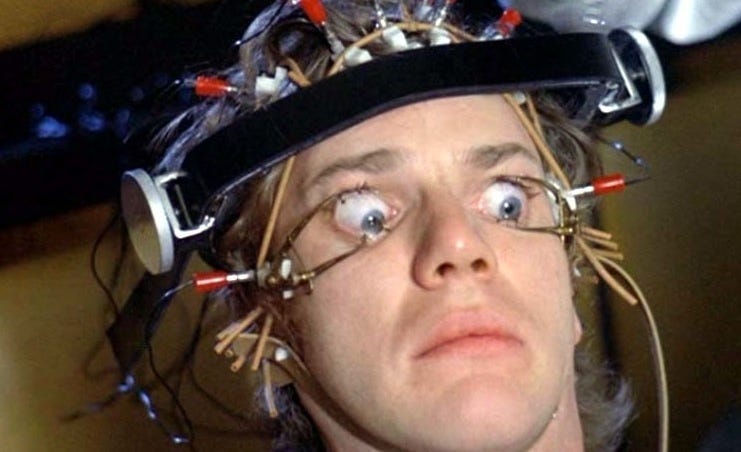

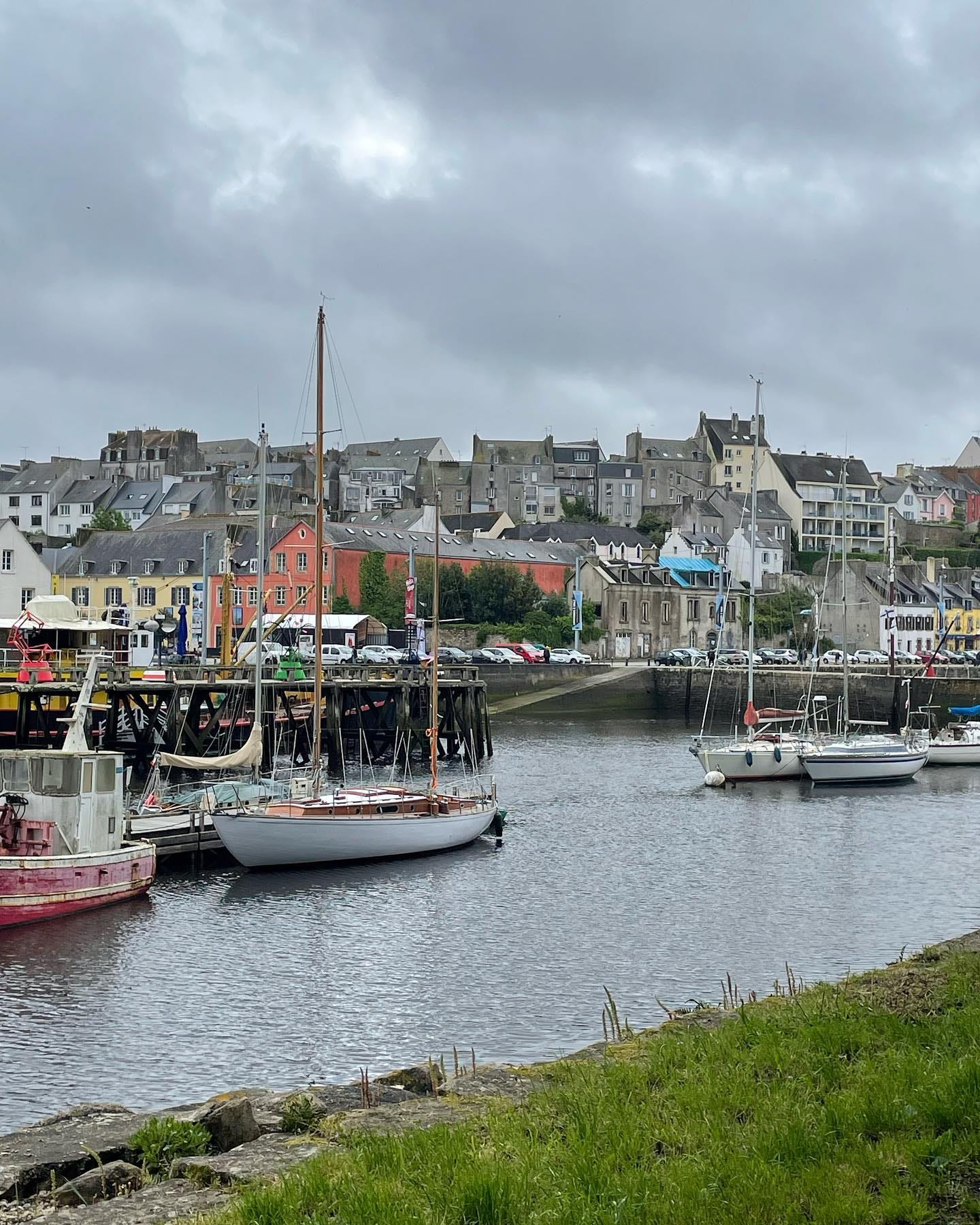
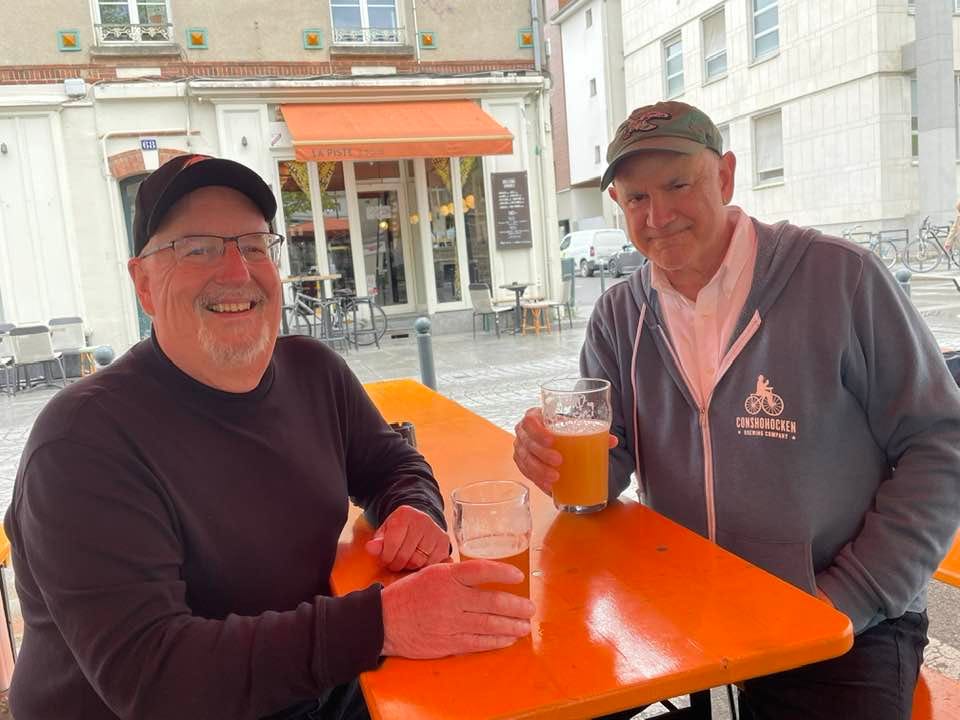

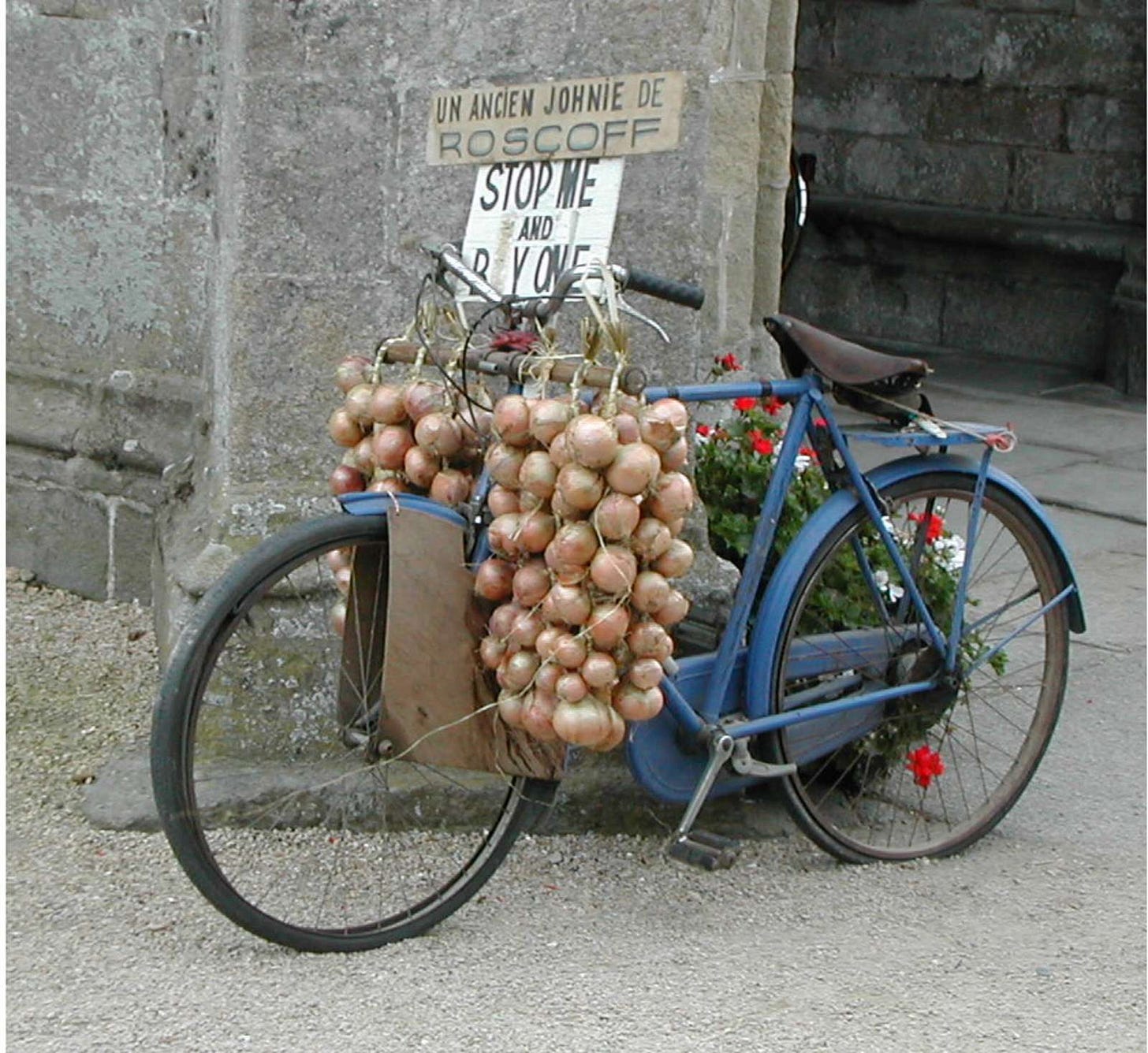
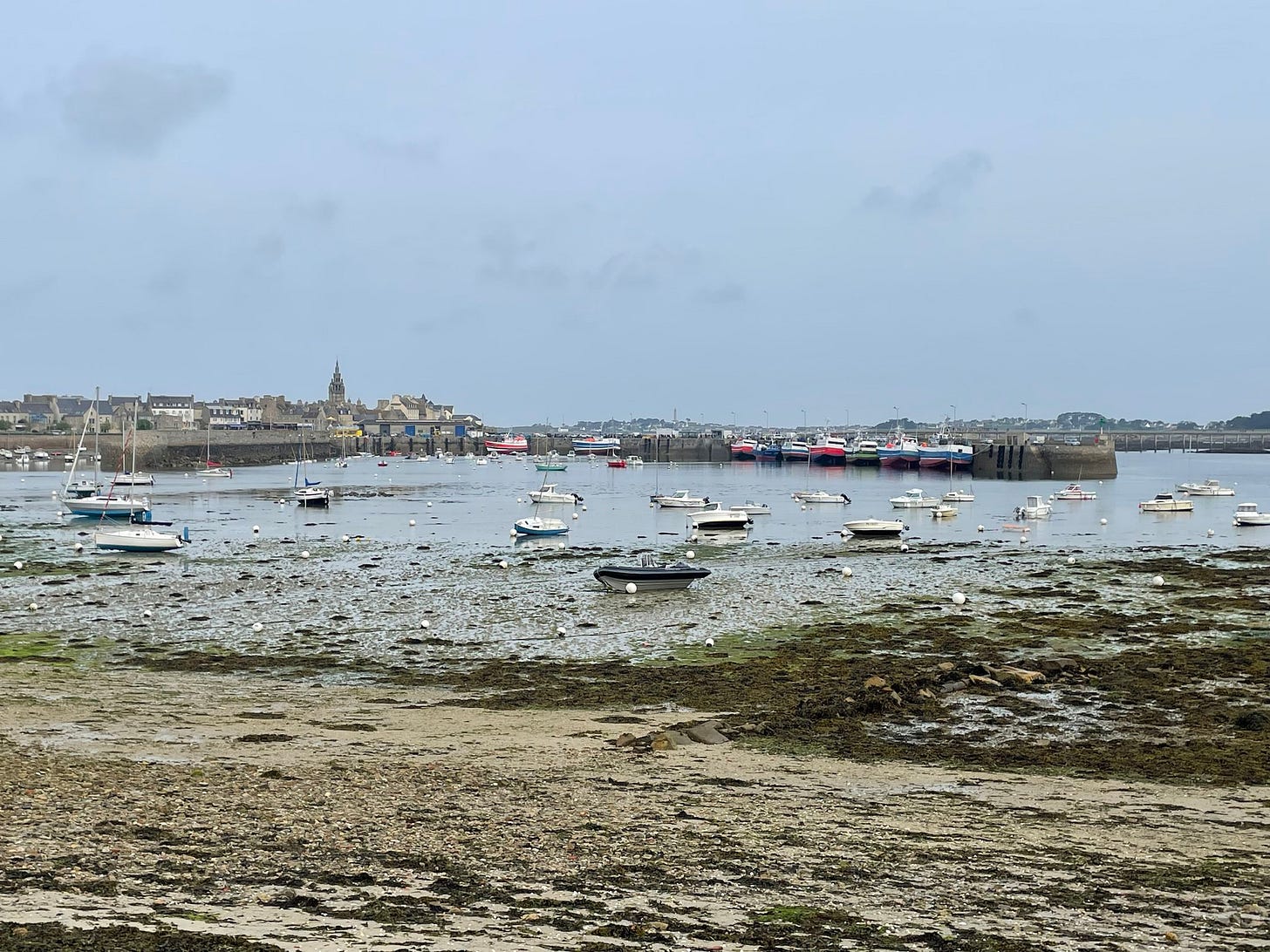
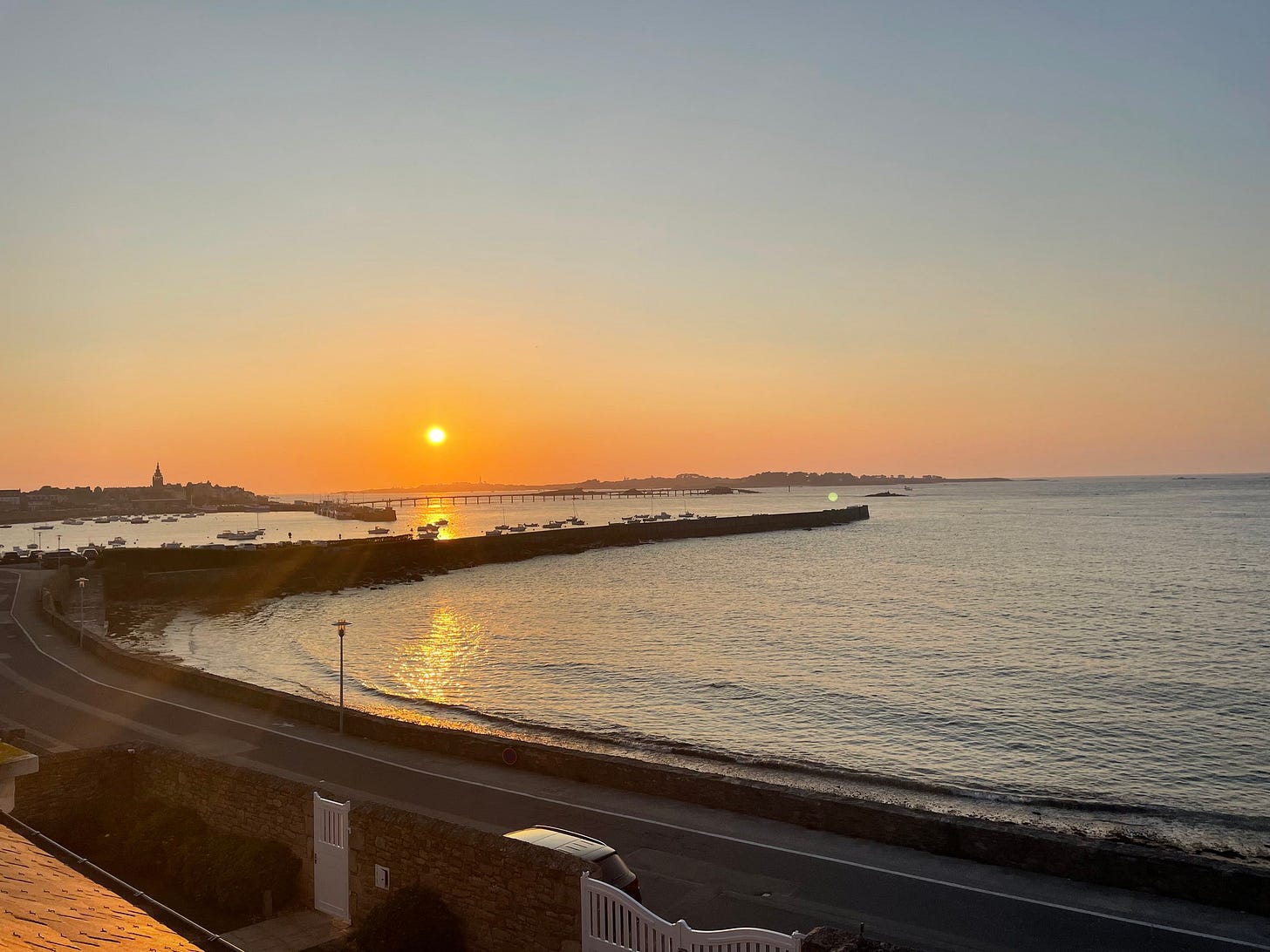
Oh the ship, matey
Where's Don's eyepatch